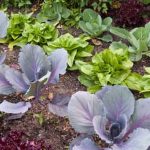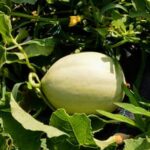Are you interested in becoming a year-round vegetable gardener? Cultivating your own vegetables throughout the seasons can be a rewarding and sustainable practice that provides fresh produce right at your fingertips. By dedicating time and effort to nurturing your garden, you can enjoy a bountiful harvest no matter the time of year.
Year-round vegetable gardening offers numerous benefits beyond just having access to fresh, home-grown produce. It allows you to connect with nature, reduce your ecological footprint, and save money on grocery expenses. Furthermore, tending to a vegetable garden provides physical exercise, mental relaxation, and a sense of accomplishment as you watch your plants thrive and flourish.
In this comprehensive guide, we will explore all aspects of year-round vegetable gardening, from selecting the right location for your garden to choosing the best vegetables for continuous cultivation. By following our tips on planning, maintenance, and troubleshooting common issues, you can elevate your gardening skills and maximize yields throughout the year. Get ready to embark on a journey towards sustainable living and delicious homegrown vegetables with our expert advice on year-round vegetable gardening.
Choosing the Right Location for Your Year-Round Vegetable Garden
When it comes to year-round vegetable gardening, choosing the right location for your garden is crucial to ensure the success of your crops. The first step in selecting a suitable spot is to consider the amount of sunlight that area receives throughout the day.
Most vegetables require at least 6-8 hours of direct sunlight to thrive, so make sure to choose a location that gets ample sun exposure. Additionally, you’ll want to pay attention to any potential obstructions such as buildings or trees that may cast shadows on your garden plot.
Another important factor to consider when picking a location for your year-round vegetable garden is access to water. Vegetables need consistent moisture to grow well, so be sure to choose a spot that is easily accessible to a water source. Whether you plan on using a hose, sprinkler system, or drip irrigation, having convenient access will make it easier for you to keep your plants properly hydrated throughout the year.
In addition to sunlight and water accessibility, take into account factors such as soil quality and drainage when deciding on a location for your year-round vegetable garden. Testing the soil pH and investing in amendments if necessary can help ensure that your plants have the proper nutrients they need to thrive.
Proper drainage is also essential, as vegetables are susceptible to root rot if they are sitting in waterlogged soil. By carefully selecting the right location for your year-round vegetable garden, you set yourself up for a successful growing season ahead.
Planning Your Year-Round Vegetable Garden Layout
Maximizing Sunlight
One of the most important aspects of planning your vegetable garden layout is ensuring that your plants receive adequate sunlight. Vegetables typically require at least 6-8 hours of direct sunlight per day to thrive. When selecting a location for your garden, choose an area that receives the most sunlight throughout the day.
Organizing Your Garden Beds
Dividing your garden into well-defined beds can help maximize space and make it easier to navigate and maintain. Raised beds are a popular option for year-round vegetable gardening as they provide better drainage and soil aeration. Consider creating pathways between your beds to allow for easy access while planting, watering, and harvesting.
Companion Planting and Crop Rotation
Another important consideration when planning your vegetable garden layout is companion planting and crop rotation. Certain plants grow well together and can even benefit one another by deterring pests or enhancing flavor. Additionally, rotating crops each season can help prevent nutrient depletion in the soil and reduce the risk of disease buildup. Be sure to research which vegetables work well together and plan your layout accordingly.
By carefully planning the layout of your year-round vegetable garden, you can set yourself up for success and ensure a bountiful harvest throughout the seasons. Remember to consider factors such as sunlight exposure, bed organization, companion planting, and crop rotation when designing your garden layout. With proper planning and attention to detail, you can create a productive and sustainable vegetable garden that will provide fresh produce year-round for you and your family to enjoy.
Essential Tools and Supplies for Year-Round Vegetable Gardening
When embarking on your journey as a year-round vegetable gardener, having the right tools and supplies is essential to ensure the success of your garden. From preparing the soil to maintaining healthy plants, here are some must-have items for your year-round vegetable gardening adventure:
- Garden Trowel: A sturdy garden trowel is vital for planting seeds, transplanting seedlings, and loosening soil. Look for a trowel with a comfortable grip and a durable metal or stainless steel blade.
- Hand Pruners: Sharp hand pruners are essential for trimming plants, removing dead foliage, and harvesting vegetables. Invest in a high-quality pair that fits comfortably in your hand for precise cuts.
- Watering Can or Hose: Adequate watering is crucial for the health of your vegetables. A watering can is ideal for small gardens or raised beds, while a hose with an adjustable nozzle works well for larger plots.
In addition to tools, stocking up on the right supplies will help you maintain a thriving year-round vegetable garden:
- Organic Fertilizer: Keep your plants healthy and productive by feeding them with organic fertilizer. Choose a slow-release formula that provides nutrients gradually over time.
- Mulch: Mulch helps retain moisture, suppress weeds, and regulate soil temperature in your garden. Use organic materials like straw, leaves, or grass clippings as mulch around your plants.
- Plant Supports: Some vegetables require support as they grow to prevent them from sprawling on the ground. Invest in plant supports such as stakes, cages, or trellises to keep your crops upright and organized.
By having these essential tools and supplies on hand, you’ll be well-equipped to tackle the challenges of year-round vegetable gardening and enjoy a bountiful harvest throughout the seasons. Remember that investing in quality tools and organic supplies will not only benefit your plants but also contribute to the sustainability of your garden over time.
Selecting the Best Vegetables for Year-Round Growing
When it comes to year-round vegetable gardening, selecting the right vegetables is crucial for success. Some vegetables are more suitable for continuous growing throughout the year due to their adaptability to different seasons and temperatures. One of the key factors to consider when choosing vegetables for your year-round garden is their hardiness and ability to withstand fluctuations in weather conditions.
Certain leafy greens like kale, Swiss chard, and spinach are excellent choices for year-round vegetable gardening as they can tolerate cold weather and even thrive in cooler temperatures. Root vegetables such as carrots, beets, and radishes also make great options for year-round growing because they can withstand frost and continue to grow during the winter months. Additionally, herbs like parsley, chives, and mint are versatile plants that can be grown indoors or outdoors all year long.
To ensure a bountiful harvest throughout the year, it’s essential to plan out your planting schedule according to each vegetable’s specific growing requirements. By staggering your plantings and choosing a variety of vegetables that complement each other’s growth patterns, you can maximize the productivity of your year-round garden. With careful selection of vegetables that suit your climate and growing conditions, you can enjoy a continuous supply of fresh produce straight from your garden every season.
| Vegetable | Recommended Seasons for Year-Round Growing |
|---|---|
| Kale | Fall, Winter, Spring |
| Carrots | Fall, Winter |
| Parsley | Spring, Summer |
Maintaining Your Year-Round Vegetable Garden
Maintaining a year-round vegetable garden requires diligence and attention to detail, especially when it comes to watering, fertilizing, and pest control. Proper care of your plants will ensure a bountiful harvest throughout the seasons, providing you with fresh produce all year long.
Watering Your Year-Round Vegetable Garden
One of the most crucial aspects of maintaining a healthy vegetable garden is providing adequate water to your plants. Different vegetables have varying water needs, so it’s essential to research and understand the requirements of each crop you are growing.
In general, most vegetables prefer consistent moisture in the soil, so it’s important to water regularly, especially during dry spells or hot weather. Using techniques like drip irrigation or soaker hoses can help deliver water directly to the roots of your plants while minimizing waste through evaporation.
Fertilizing Your Year-Round Vegetable Garden
To ensure that your vegetables have access to essential nutrients for growth and productivity, fertilizing is an essential aspect of maintenance. Consider using organic fertilizers such as compost or manure to promote soil health and enhance microbial activity.
By conducting regular soil tests, you can determine the specific nutrient needs of your garden and adjust your fertilization schedule accordingly. Over-fertilization can lead to nutrient imbalances and potential harm to your plants, so it’s important to follow guidelines and recommendations based on the crops you are growing.
Pest Control in Your Year-Round Vegetable Garden
Dealing with pests is an inevitable part of gardening, but there are various strategies you can implement to minimize damage and protect your crops. To deter common garden pests like aphids, caterpillars, or beetles, consider using natural remedies such as beneficial insects like ladybugs or praying mantises.
You can also practice companion planting by intermixing certain herbs or flowers known for their pest-repellent properties among your vegetable crops. Regularly inspecting your plants for signs of pest infestation and addressing issues promptly can help prevent extensive damage and maintain the health of your year-round vegetable garden.
By following proper watering practices, implementing appropriate fertilization techniques, and employing effective pest control measures, you can sustain a thriving year-round vegetable garden that yields a plentiful harvest across all seasons. Remember that consistency and observation are key components in maintaining a successful garden throughout the year.
Harvesting and Enjoying the Fruits of Your Labor
When you’ve put in the hard work of maintaining a year-round vegetable garden, the ultimate reward comes when you can harvest and enjoy the fruits of your labor. To maximize yields and ensure a bountiful harvest, there are several tips and practices that seasoned year-round vegetable gardeners swear by.
One essential tip is to stagger your planting times to ensure a continuous supply of fresh produce throughout the year. By planting in succession, you can avoid having an overwhelming amount of one vegetable all at once.
Another important aspect of maximizing yields in your year-round vegetable garden is proper soil maintenance. Regularly amending your soil with compost or organic matter can help boost nutrient levels and improve overall soil health. Additionally, rotating your crops annually can help prevent soil-borne diseases and maintain fertility levels. Different vegetables have different nutrient needs, so it’s important to pay attention to their specific requirements when planning your crop rotation schedule.
Furthermore, paying attention to proper harvesting techniques can also contribute to maximizing yields in your year-round vegetable garden. Harvesting vegetables at the peak of ripeness ensures the best flavor and nutritional content.
It’s also crucial to pick vegetables regularly, as leaving them on the plant for too long can result in decreased yield quality. By following these tips and being attentive to your plants’ needs, you can enjoy abundant harvests from your year-round vegetable garden throughout the seasons.
| Tip | Recommendation |
|---|---|
| Succession planting | Stagger planting times for continuous supply |
| Soil maintenance | Amend soil with compost regularly |
| Crop rotation | Rotate crops annually to prevent diseases |
| Proper harvesting techniques | Pick vegetables at peak ripeness for best quality |
Troubleshooting Common Issues in Year-Round Vegetable Gardening
As a year-round vegetable gardener, you may encounter common issues that can affect the health and productivity of your plants. Identifying and addressing these problems promptly is essential to ensure a successful harvest throughout the year. Here are some common issues you may face in your year-round vegetable garden:
- Pest Infestations: Pests such as aphids, caterpillars, and slugs can wreak havoc on your vegetable plants if left unchecked. To combat pest infestations, consider using natural insecticides, companion planting techniques, or physical barriers like row covers.
- Disease Outbreaks: Diseases like powdery mildew, blight, and root rot can devastate your vegetable garden if not detected early. Practice good crop rotation, proper spacing between plants for adequate air circulation, and regular inspection for signs of disease to minimize their impact.
- Soil Issues: Poor soil quality can hinder plant growth and development in your year-round vegetable garden. Conduct regular soil tests to monitor nutrient levels and pH balance. Amend the soil with organic matter such as compost or aged manure to improve its structure and fertility.
By staying vigilant and implementing proactive measures to address these common issues in your year-round vegetable garden, you can maintain a healthy and productive growing environment for your crops. Remember that prevention is key when it comes to preserving the well-being of your plants and maximizing yields throughout the changing seasons of the year.
Taking Your Year-Round Vegetable Garden to the Next Level
For the year-round vegetable gardener looking to elevate their skills and yields, there are several advanced techniques and practices that can take your garden to the next level. One such technique is succession planting, where you strategically plant new crops as soon as the previous ones are harvested. This continuous planting ensures a constant supply of fresh vegetables throughout the year.
In addition, incorporating season extenders such as cold frames, row covers, and hoop houses can help protect your crops from frost and extend your growing season well into the colder months. These structures provide a controlled environment for your plants to thrive in less-than-ideal conditions.
Furthermore, experimenting with intercropping and companion planting can maximize space and increase productivity in your year-round vegetable garden. By planting complementary species together, you can naturally deter pests, improve soil health, and promote overall plant growth. These advanced practices not only benefit your garden but also contribute to a sustainable and eco-friendly approach to gardening.
As you continue to refine your skills as a year-round vegetable gardener, don’t be afraid to try new techniques, explore different varieties of vegetables, and adapt to the unique conditions of your location. With dedication, patience, and a willingness to learn, you can truly enjoy the abundance of fresh produce from your garden all year long.
So roll up your sleeves, dig in the soil, and let your passion for gardening flourish into a bountiful harvest that nourishes both body and soul.

If you’re looking to get into vegetable gardening, or are just looking for some tips on how to make your current garden better, then you’ve come to the right place! My name is Ethel and I have been gardening for years. In this blog, I’m going to share with you some of my best tips on how to create a successful vegetable garden.





